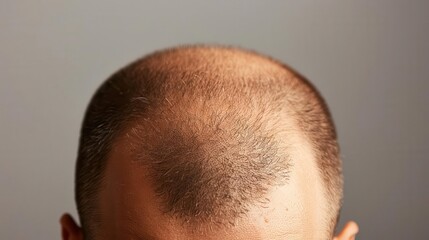As the quest for thicker, fuller hair continues, many individuals facing hair loss, particularly at the crown, often wonder whether a hair transplant can also improve their hairlines. This article aims to answer that question, exploring Crown Hair Transplant in Abu Dhabi, their impact on hairlines, and what candidates can realistically expect.
Understanding Crown Hair Transplants
A crown hair transplant is a surgical procedure that relocates hair follicles from donor areas (typically the back or sides of the scalp) to areas experiencing thinning or balding at the crown. While the primary goal is to restore hair density in the crown region, many people explore whether the procedure can rejuvenate the hairline as well.
The Hairline and Its Importance
The hairline plays a crucial role in defining one’s appearance. A well-defined hairline can contribute significantly to an individual’s overall look, enhancing facial features and fostering self-confidence. For many, a receding hairline can be more distressing than thinning hair elsewhere on the scalp due to its visibility and impact on aesthetics.
Can Crown Hair Transplants Help Restore Hairlines?
1. The Primary Focus of the Procedure
Crown hair transplants primarily target the crown – the top, back portion of the head where thinning often becomes pronounced. However, the principles that make crown transplants effective can also be applied to areas around the hairline. Therefore, while crown hair transplants focus on the crown, the same transplant techniques can be utilized to reshape or restore hairlines.
2. Combining Crown Transplants with Hairline Restoration
For individuals looking to address both the crown and the hairline, a comprehensive hair restoration plan can be created. Here are a few points to consider:
- Consultation with a Specialist: A qualified hair restoration surgeon can assess both the crown and hairline, developing a customized plan that addresses individual needs.
- Techniques Used: The same methods used to transplant hair to the crown can be applied to the frontal hairline. The surgeon can harvest follicular units and strategically place them along the hairline for a natural look.
- Creating a Natural Hairline: A skilled surgeon will pay close attention to the angle, density, and shape of the hairline to produce a natural appearance. This careful planning is crucial, as a poorly designed hairline can lead to unsatisfactory results.
3. Limitations to Consider
While crown hair transplants can positively influence hairlines, it’s essential to understand limitations:
- Existing Loss: If significant hair loss has occurred and the hairline has retreated dramatically, there may not be enough donor hair to restore it fully, especially if only the crown is being treated at the same time.
- Age and Ongoing Hair Loss: Younger patients may still experience hair loss, which could impact the hairline’s appearance over time. Surgeons often recommend waiting until hair loss has stabilized before performing hairline restoration.
- Hair Growth Cycle: Newly transplanted hair takes time to grow. It may require 6 to 12 months to see full results, so patience is crucial.
What to Expect After the Procedure
1. Initial Shedding Phase
After the transplant, most patients experience an initial shedding phase where the transplanted hair may fall out. It’s essential to understand this is a normal part of the process, and hairs will usually begin regrowing after several months.
2. Gradual Improvement
Patients should expect gradual improvement in both the crown and hairline. Full results will typically be visible around the 12-month mark, with transplanted hairs thickening and blending with existing hair.
3. Maintenance and Care
Following the procedure, patients may need guidance on aftercare to ensure optimal results. This could involve:
- Using prescribed medications to prevent further hair loss.
- Attending follow-up appointments to monitor progress and health.
- Maintaining a healthy lifestyle to support hair health.
Conclusion: Achieving Fullness in the Crown and a Defined Hairline
While crown hair transplants primarily address thinning in the crown area, they can also be part of a broader strategy to restore a receding hairline. With proper planning, skilled surgical techniques, and realistic expectations, it is possible to enhance not only the crown but also the hairline.
If you’re considering a crown hair transplant with the goal of enhancing your hairline, consult with a qualified hair restoration specialist to discuss your options and create a tailored treatment plan that meets your unique needs.
